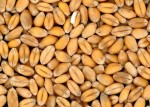News
2017-07-11 | permalink
Global food prices to remain low over the next decade, OECD-FAO report
 The report projects low food prices over the next decade (Photo: CC0)
The report projects low food prices over the next decade (Photo: CC0)
Global food prices are projected to remain low over the next decade as demand growth for food commodities is expected to slow down and biofuel policies have less impact on markets than in the past. This is the key message of the OECD-FAO Agricultural Outlook 2017 - 2026 published on Monday. The report provides ten-year projections to 2026 for all major agricultural commodities, as well as for biofuels and fish. The Organization for Economic Cooperation and Development (OECD) and the UN Food and Agriculture Organization (FAO) say that the completed replenishment of cereal stocks by 230 million metric tonnes over the past decade, combined with abundant stocks of most other commodities, will prevent a rise in prices, which are now almost back to their levels before the 2007-08 food price crisis. “Real prices of most agricultural and fish commodities are expected to decline slightly over the ten-year Outlook period,” said OECD Secretary-General Angel Gurría. But he also warned that is essential that governments continue joint efforts to provide stability to world food markets since unexpected events can easily change these trends.
Over the outlook period, global cereal production is projected to expand by 12%, leading to a total increase by 2026 of 11% for wheat, 14% for maize, 10% for other coarse grains, and 13% for rice. Future growth in crop production will be mainly achieved through higher yields. For example, 90% of the increase in maize production is expected to come from increased yields and just 10% from area expansion. Global meat production will expand by almost 40 Mt over the outlook period. Growth will continue to be driven mainly by poultry production, which is projected to increase by 13%, and a 10% increase in pigmeat. Growth in meat and dairy production is expected to come from both larger herds and higher output per-animal. By 2026, average calorie availability is projected to reach 2,450 kcal per day in least developed countries and exceed 3,000 kcal per day in other developing countries. “But we also know that more food alone is not enough to eliminate undernourishment and other forms of malnutrition,” said FAO Director-General José Graziano da Silva. “Access to the additional calories is extremely important. More challenging is the fight against malnutrition: Fighting malnutrition requires a diversified, safe and nutritious diet, ideally produced with a lower environmental footprint,” he added.
The report projects that per capita demand for food staples may not rise (except in least developed countries), while growth in demand for meat may slow. Over the past years, demand growth was mainly driven by China, where rising meat and fish demand caused the consumption of feed to grow by almost 6% per year, and also by the global biofuel sector, where the use of feedstock inputs grew by almost 8% per year. These trends are not anticipated to continue in the same way over the medium term. Global meat consumption per capita is expected to stagnate at 34.6 kg retail weight equivalent by 2026, an increase of less than half a kilogram compared to the base period. This is due to large low-income groups and changing dietary preferences which will keep “convergence” towards western diets limited according to FAO and OECD projections.
The report states that demand growth for ethanol and biodiesel has weakened due to lower fossil fuel prices and fewer incentives from government policies. Even though energy prices are projected to increase, the derived demand for biofuel feedstocks, especially maize and sugarcane for ethanol and vegetable oil for biodiesel, will grow slowly, except in key developing countries where demand increases are driven by more pro-active domestic policies. Biofuel production is projected to grow by 17% over the next ten years, compared to a 90% increase over the previous decade.
This year’s Agricultural Outlook includes a special focus on Southeast Asia. Economic growth has been strong and the agriculture and fish sectors have developed rapidly in the region, the authors write. They found that this growth has enabled the region to significantly reduce undernourishment in recent years. However, the growth of agriculture and fisheries, in particular in the export-oriented fish and palm oil sectors, has led to rising pressure on natural resources. (ab)

